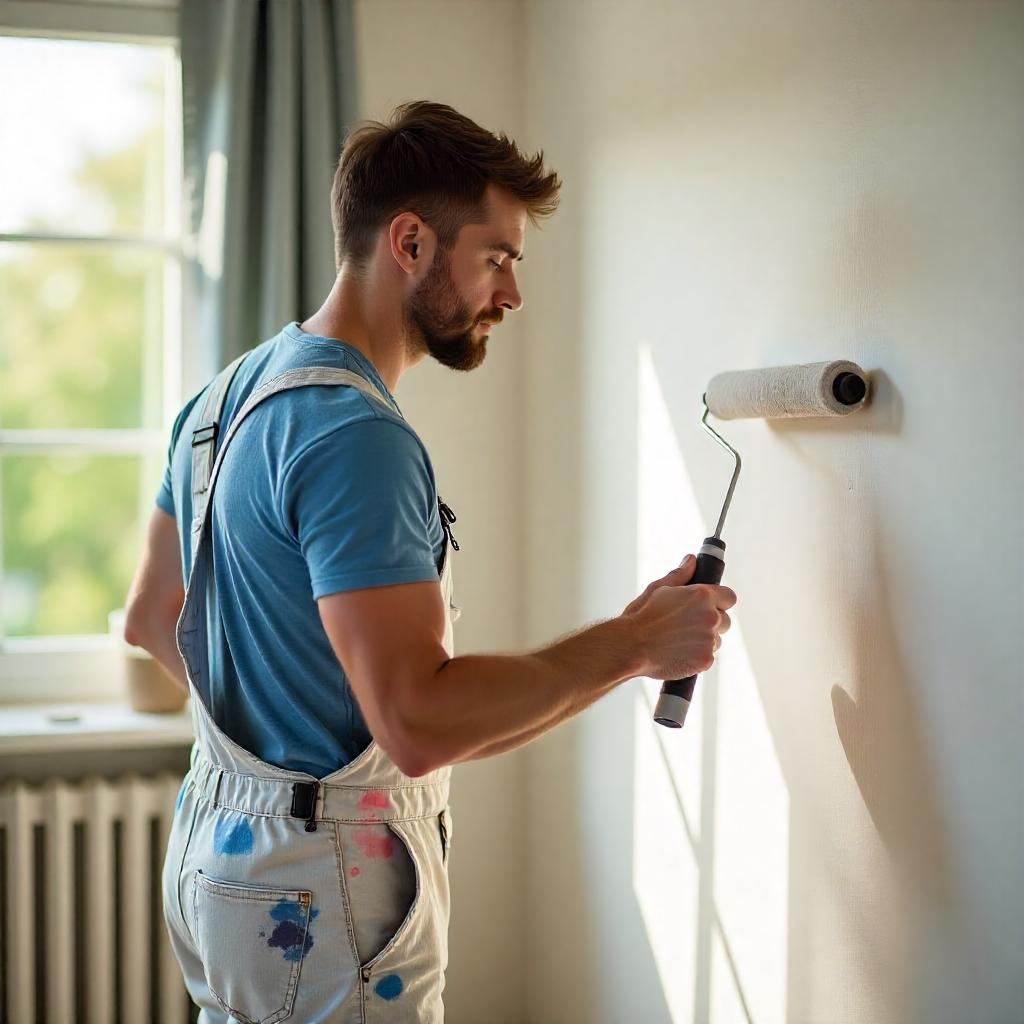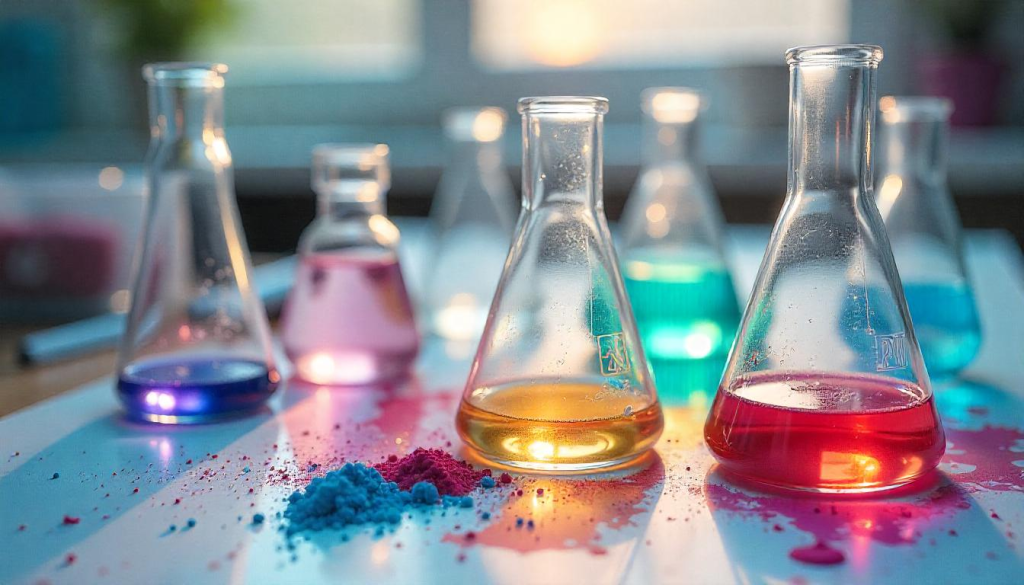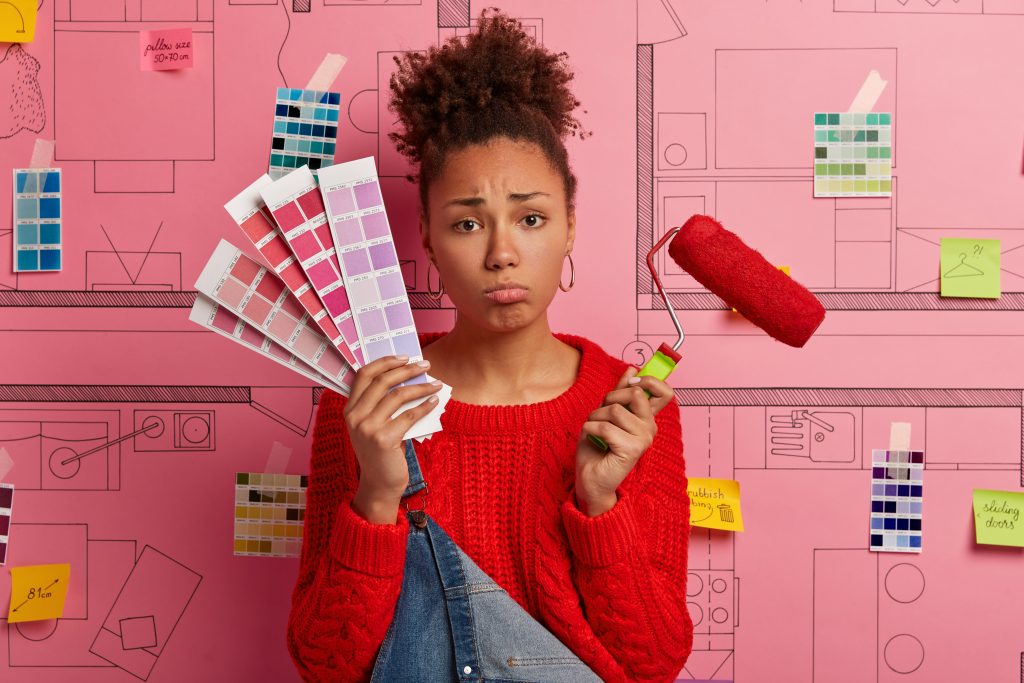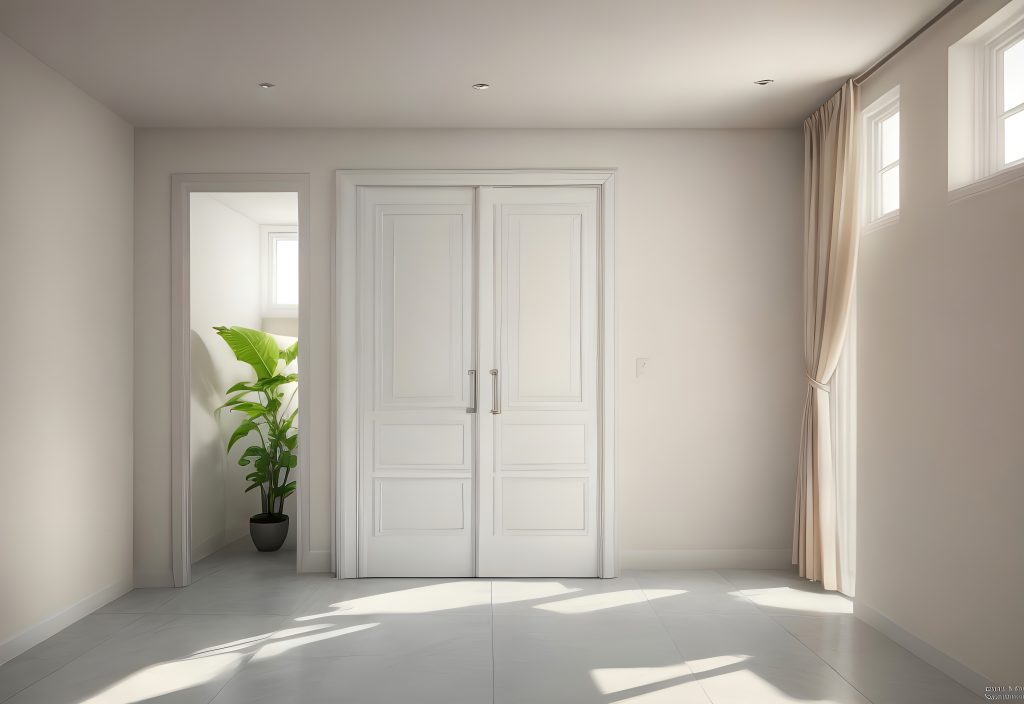
Ever thought about getting that pro wall finish without spending too much? Choosing between DIY or professional painting is tricky. It’s not just about how good you are. You must consider costs, quality, and what you really want. Let’s dive into what fits our needs and budget best. In the end, we’ll see what makes our homes look like dream places.
Understanding the Basics of Painting
When we start painting, knowing the basics really helps us do better. It’s not only about picking colours. We need to understand key concepts to improve our work, whether we’re doing it ourselves or hiring others.

First off, preparing the surface is vital. If we do it right, the paint will stick better and look nice for longer. We might need to clean, sand, and prime to get everything ready for painting.
Painting Techniques
Different painting methods can make our work stand out. Techniques like rolling, brushing, or spraying have their advantages. Choosing the right way can take our project to the next level.
Getting good at these methods helps us know more about painting. It lets us apply paint more carefully.
- Rolling: Ideal for large surfaces, it provides quick coverage.
- Brushing: Great for detail work and smaller areas.
- Spraying: Offers a smooth finish but requires safety precautions.
Knowing these basic ideas helps us tackle painting projects with more confidence and skill. This way, we make the most of our time and resources.
The Art and Science of Painting
Painting connects both art and science. The art part involves using our creativity and expressing ourselves. The science part focuses on the techniques we use to make our art look good. It also involves colour theory, which affects how we feel about the spaces around us.

Color Theory
Colour theory helps us choose the right colours. Warm colours can make us feel cosy and close. Cool colours can make a space feel calm and open. Knowing this lets us use colour to improve how a room feels.
It’s not just about what colours we pick. We also need to think about paint finishes. Different finishes work better in different places. For example:
- Matte finishes are smooth and hide flaws well.
- Eggshell finishes have a bit of shine and are good for living spaces.
- Satin finishes offer a soft glow, perfect for kitchens and bathrooms.
- Gloss finishes shine brightly, great for details like trim.
Knowing about colour theory and paint finishes helps us master painting. This way, our projects look great and last long.
Necessary Tools for a Painting Job
Starting a painting project? The right painting tools are key for a top-notch finish. With the best DIY painting supplies, creating beautiful spaces becomes easier. And for the pros, the right gear can make the job faster and the results better.
If you’re into DIY, getting the right tools is a must. Here’s what you’ll need:
- Brushes of various sizes for different surfaces
- Rollers for large areas
- Painter’s tape to ensure clean lines
- Drop cloths to protect floors and furniture
Pros, on the other hand, need more advanced professional painting equipment. Tools like airless sprayers make work quicker and deliver smoother finishes. Something brushes can’t always do.
Picking the right tools for your project can really boost the quality and speed of your work.
Advantages of a do-it-yourself Painting Approach
Going the do-it-yourself route in painting has many benefits people love. Saving money is a big plus. By doing the work ourselves, we don’t have to pay someone else to paint. This means we can spend more on better paint and tools.
The freedom to choose when we paint is another bonus. We can paint on our own time without rushing. This way, we can focus fully on making the project perfect.

DIY painting lets us get creative and pick our own colors and designs. It’s a chance to put our unique touch on our home. Doing it ourselves also brings a big sense of pride and joy in the finished work.
But, getting into DIY painting means we need to commit. It takes time and effort to see good results. Yet, with some planning and dedication, we can make our homes look amazing.
Disadvantages of do-it-yourself Painting
Do-it-yourself painting seems great, but it comes with challenges. A big issue is how much time-consuming DIY affects us. Trying to fit painting into a packed schedule can be frustrating. A weekend project might end up taking much longer.

It’s also physically demanding to paint a room. You’ll be standing, bending, and reaching a lot. This can make you tired and lead to mistakes in do-it-yourself projects. Common issues include paint not going on evenly, drips, or splashes that ruin the look.
Many forget how important preparation is. It’s tempting to jump straight to painting. But not cleaning surfaces or skipping primer can lead to bad results. Understanding these issues can help us see what’s really involved in do-it-yourself painting.
Benefits of Hiring Professional Painters
Hiring professional painters for your home has many upsides. These pros have a skill set and knowledge that’s hard to find elsewhere. They know everything about paint types, prep work, and how to apply it for long-lasting results.
Getting pros means getting top-notch quality. They’ve gotten really good at dealing with all kinds of surfaces and problems. A job well done not only makes your space look better but also protects it.

Also, it saves you time and effort. Doing a paint job right takes a lot of steps and skill, which can be too much for do-it-yourself enthusiasts. By hiring experts, you can chill, knowing your home is in good hands.
To wrap it up, choosing professional painters brings their know-how and quickness to your project. They make sure your home shines, all while giving you peace of mind.
Drawbacks of Professional Painting Services
Hiring professional painters has its benefits, but there are downsides too. A big downside is the cost of professional painting. It can be more than we expect. The price changes based on the job size, materials, and the painter’s fame.
Having less control over project details is another issue. We might want certain colours or finishes. But painters usually have their own ways. This means the final look might not be what we pictured.
It’s important to weigh these cons against the pros. Doing this helps us choose wisely for our home. This way, we’ll know our choice fits what we want and need.
Cost Comparison: DIY vs. Professional Painting
When looking at painting our home, comparing DIY vs professional costs is key. Knowing the costs of both options helps us choose wisely.
DIY painting means we buy paint, brushes, and other supplies ourselves. This can cost between $200 and $500, depending on the room size and paint quality. But remember, mistakes can happen. Fixing errors like uneven coats might cost more.
Hiring professional painters costs more at first. They factor in the work’s scope, prep needs, and location into their prices. Their rates range from $1 to $4 per square foot. This includes not just painting, but their skill for a smooth finish too.
Looking at the cost comparison of painting helps us decide. Whether we choose DIY to save money or hire pros for quality, watching costs is crucial. It guides us to the best choice for our needs and budget.
Time and Effort: DIY vs. Professional Painting
When thinking about painting, it’s key to think about the time investment for painting. For DIY fans, we need to think about the effort required for DIY painting, especially without prior experience. Doing it ourselves can feel rewarding but often takes longer than we think.
Meanwhile, professional painters bring their know-how and special tools. This leads to impressive professional efficiency. They finish work quicker than beginners could. This speed results in a faster job done and usually, a smoother look.
Deciding between DIY or professional help means weighing time against effort. Whether going DIY or hiring experts, knowing this helps us start our painting projects right.
Surface Preparation: Importance in Painting Projects
Surface preparation is a critical first step in any painting project. It ensures a smooth and lasting finish. Proper prep includes several tasks that create the base for an excellent outcome.
Cleaning the surface is our initial action in getting ready to paint. This removes dust, grease, and anything else that might stop the paint from sticking. We also look for cracks or holes that need fixing to ensure a smooth look.
Applying primer is another key step in preparing surfaces. Primer not only makes the paint last longer but also makes the colour look better. Choosing the right primer for the surface is crucial for our project’s success.
We focus on surface preparation to make our painting projects last longer and look better. A well-prepped surface results in a stunning finish that lasts. Even though it takes more time and effort, the end result is worth it.
Choosing the Right Type of Paint
Starting a painting project means we must pick the right paint. There are many paints available, each suited for different surfaces. Picking the right one ensures our project looks great in the end.
Paint can be broken down into a few main types:
- Latex Paint: Great for inside walls, this water-based paint is easy to clean and smells less.
- Oil-based Paint: Offers a durable, smooth look for trim and needs solvents for cleanup.
- Spray Paint: Good for quick jobs and small areas, it goes on smoothly and evenly.
- Chalk Paint: Best for furniture, giving a matte, vintage look that’s customisable.
Next, think about paint finishes. Each has its own look:
- Matte Finish: Doesn’t shine and hides wall flaws well.
- Satin Finish: Has a little sheen and is easy to clean, great for busy rooms.
- Glossy Finish: Very shiny and tough, perfect for kitchens and baths.
Choosing the right paint also means thinking about the area and how it’s used. Talking to pros can help, especially with special paints.
Taking the time to choose paint carefully makes our work look and last better. This ensures we’re proud of the result.
Key Questions to Ask Before Hiring a Painter
When thinking about hiring a painter, it’s key to ask important questions. This helps us know what to expect and makes the project go smoothly. We need to ask the right questions for hiring painters to clear up any doubts.
We should start by asking about the prep work. Good prep work is key for a great paint job. It affects how well the final job looks. Understanding their prep process helps us trust their skills.
Then, it’s important to talk about how long the work will take. We need to make sure their schedule fits with ours. A good painter will be clear about when they’ll finish the job.
It’s also smart to ask about their experience and skills. Learning about the number of projects they’ve handled shows their expertise. This helps us find truly professional painters.
Talking about cleanup after the project is also a good move. We should know how they’ll clean up. And if they’ll leave our space neat. A professional painter cares about leaving a clean space.
Last, we need to ask about warranties and customer service. These questions give us confidence after the job is done. By asking these important points, we’re on our way to finding the best painters for our needs.
Conclusion
As we wrap up our talk on DIY vs. Professional Painting, both ways clearly have ups and downs. Going the DIY route lets us be creative and may save money, but it takes a lot of time and hard work. On the flip side, professional painters deliver top-notch work and take the stress away, but this comes with a higher price tag.
In our discussion on DIY vs. Professional Painting, we’ve pointed out things to consider when making our choice. Our own painting skills, how much we can spend, and the needs of our project are key. Both options can make our home look great with careful planning and effort.
Whether choosing to paint ourselves or hiring experts, planning ahead is key. With a good approach and the right tools, we can create a space that shows off our unique style and makes our home better.
FAQ
What are the best reasons to choose a DIY painting project?
DIY painting saves money by cutting out labour costs. It lets you set your own schedule. Plus, you can pick your own colours and be creative.
What are the common mistakes DIY painters make?
Common errors include not preparing surfaces well, applying paint unevenly, and getting a bad finish. These issues can be disappointing.
How can I ensure high-quality results in my DIY paint job?
For top results, buy good tools and prepare surfaces carefully. Choose the best paint type and finish. Also, learn the best ways to apply paint.
What benefits do professional painters provide?
Pros know about paint choice, techniques, and surface prep for a lasting finish. They also clean up and work fast.
What factors affect the cost of hiring professional painters?
Costs vary with project size, paint type, surface prep, and work complexity. These factors all play a part.
How long does it typically take for professional painters to complete a job?
Completion time varies with job size and details. Yet, pros work quicker and more efficiently than DIY painters.
What should I consider when selecting the type of paint for my project?
Think about the room, surface, finish you want, and paint purpose. Different paints have different qualities for looks and durability.
What questions should I ask when interviewing potential painters?
Ask about prep work, project time, team experience, cleaning, warranties, and service. This helps ensure a smooth project.
How can I determine if I should hire a professional painter or do it myself?
Consider your skills, time, budget, and the quality you want. Weighing these factors helps decide between DIY or a pro.

